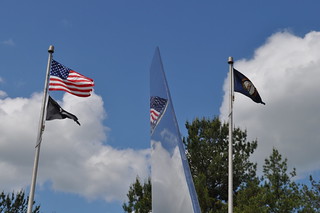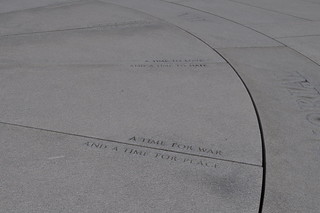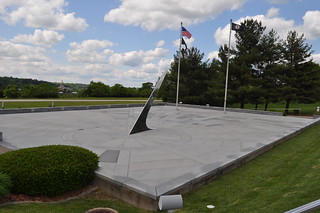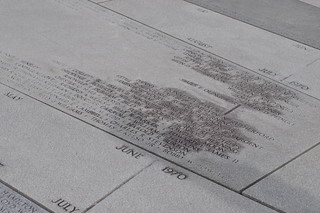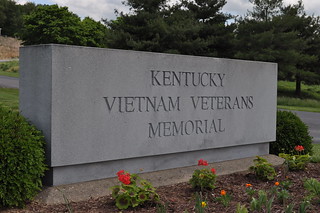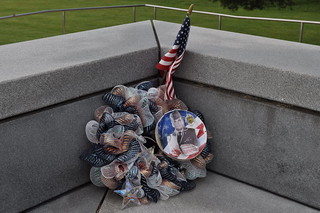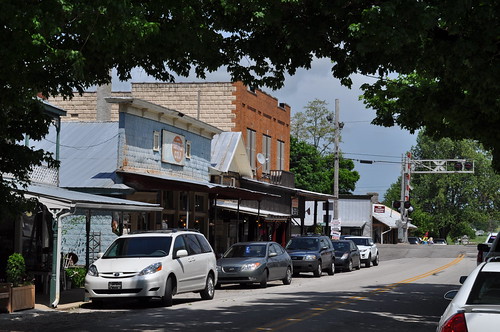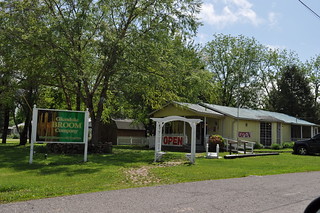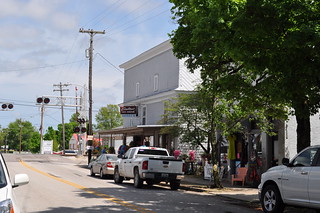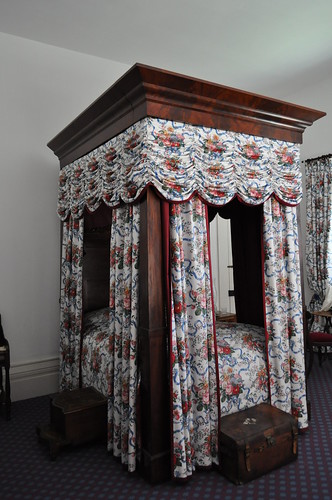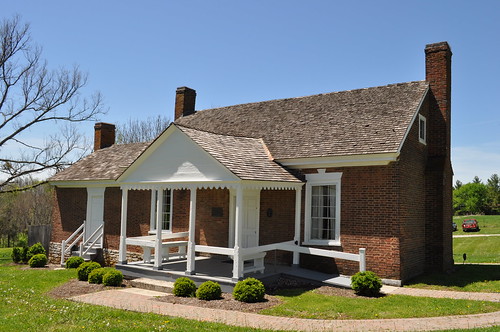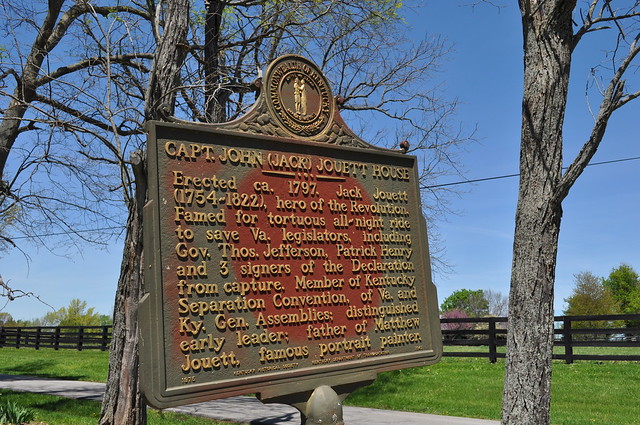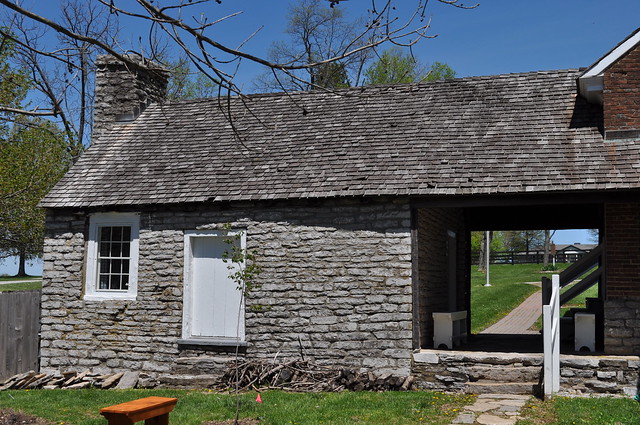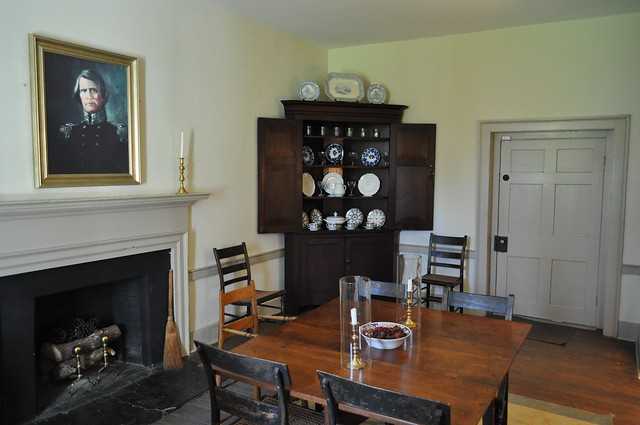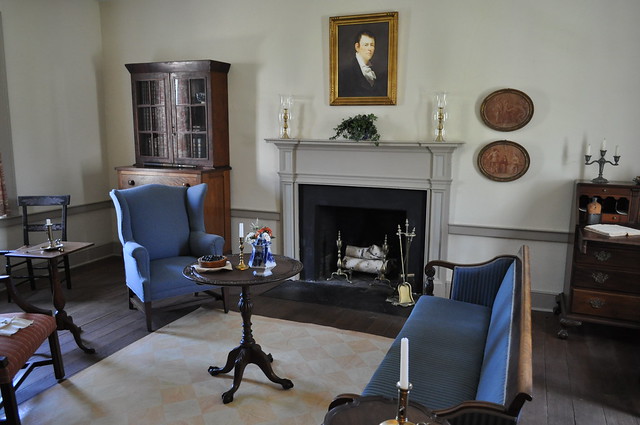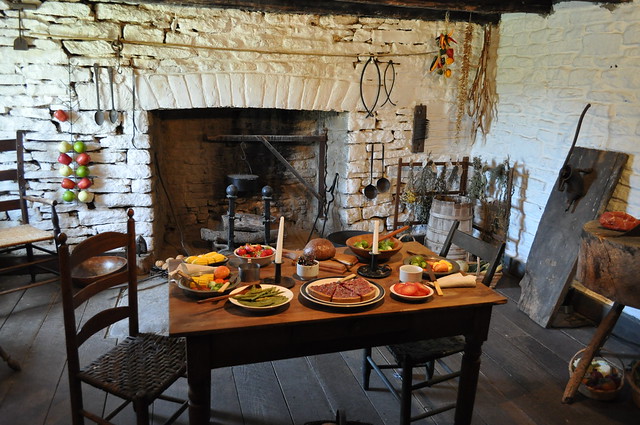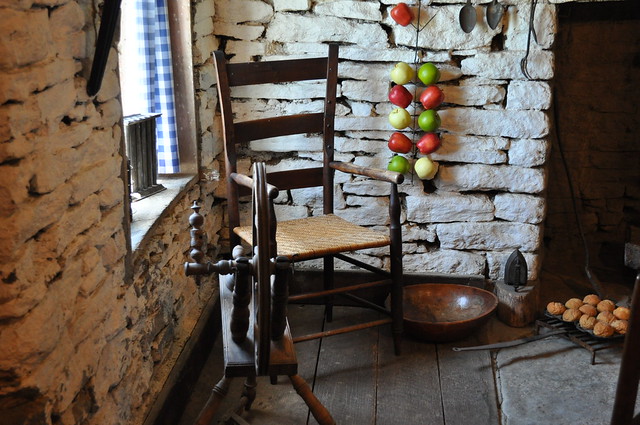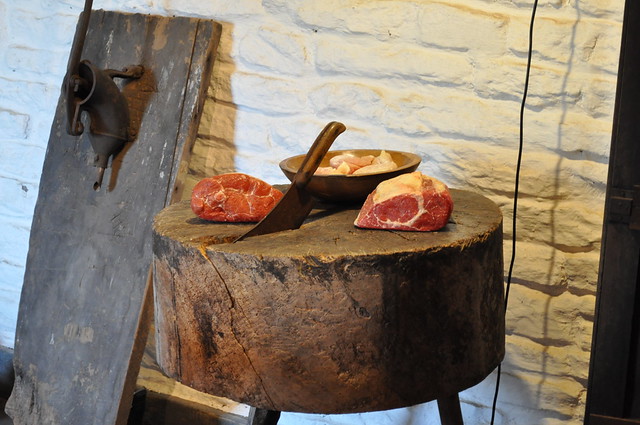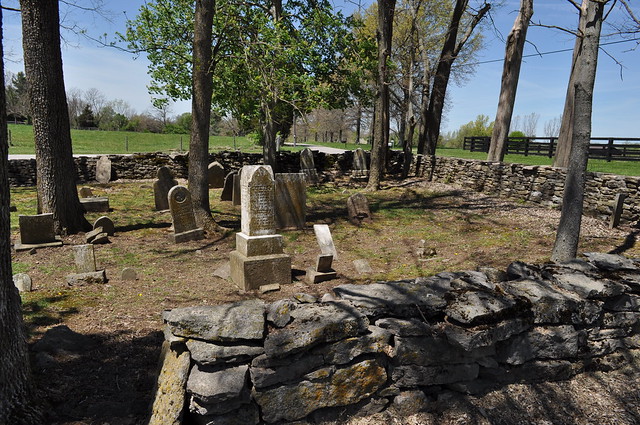Tucked away near Lexington's south-easternmost border, on 15 rare acres of undeveloped land, sits one of the region's premiere antebellum estates -
Waveland. Constructed in 1848 by Joseph Bryan, one of Daniel Boone's grandnephews, the Greek Revival manor house presides over the picturesque estate without a care for the urban sprawl that lurks just beyond its boundaries. Now a State Historic Site, Waveland provides a tranquil escape within easy reach - just a mile south of the
Fayette Mall and the dreaded Nicholasville Road corridor - for Lexingtonians and visitors alike.
Waveland has a reputation for being
the spot for professional and amateur photographers to practice their craft. Visiting on a beautiful spring Sunday afternoon, it was immediately apparent to us that the reputation was well-deserved. Small groups of people, with at least one camera-toting member, buzzed about the grounds. Though it was much too early for the blooms of spring to be in full force, we witnessed young couples in poses of affection beneath garden trellises and seated on centuries-old stone walls. As lovely as they were this early in the year, I can only imagine how inspiring the formal gardens must look during the height of the growing season.

Making our way around the grounds, doing our best not to spoil any of the engagement/best-friend/going-steady photo moments being made, it was interesting to note how one of Kentucky's major plantations was being enjoyed by 21st-century folk. Along with the photographers and their subjects, several groups of picnicers were making good use of the site's picnic tables and playground while casual browsers (like us) viewed the exteriors of the manor house and outbuildings (which include brick slave quarters, ice house, and smokehouse).
During regular operating months (which are April through December, though the grounds are open year-round) visitors can step into a 1790's log cabin to purchase admission for a guided tour of the estate. During our visit, we were fortunate enough to have as our guide a descendant of the Bryan family who was extremely knowledgeable not only of the house and the genealogy of its owners, but of the abundant antiques and portraits contained within.
Beginning, as historic home tours often do, just inside the front door, we were quite surprised to learn that Waveland was one of only a very few manor houses of its era to boast wall-to-wall carpet throughout. It seems that the lady of the house, Mrs. Margaret Bryan,
née Cartmell, had quite aristocratic tastes and insisted that her home be lavished with luxuries - including one of the earliest sewing machines, which is still on display in the master bedroom.
Touring the interior of Waveland on a bright day will give you the best chance for photography. Use of a flash is prohibited, and electric lighting is non-existent in order to present the home as it would have appeared during the height of its occupation. Keep that in mind when planning your visit, because you'll definitely want to capture snapshots of some of the rare artifacts such as General John Hunt Morgan's cavalry sword, Henry Clay's personal coin-silver tea set, or a chair handcrafted by Squire Boone himself (how all of these famous families are interrelated is fascinating and reminiscent of feudal European society).
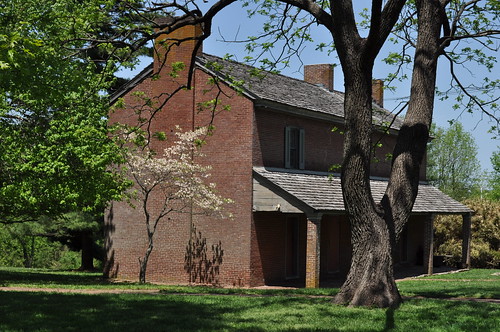
While describing the upper-class way of life that the owners of and visitors to Waveland enjoyed, our guide often remarked upon the contributions that slavery had on the Bryan family's ability to enjoy their wealth and pursuit of leisure. The curators of the estate have done a remarkable job presenting an honest portrayal of what is an often ignored fact of pre-Civil War Southern culture. The brick structure that once housed the kitchen and the living quarters for the house slaves now also contains many artifacts, photographs, and illustrations meant to foster discussion of slavery at Waveland, in Lexington, and throughout the South in general.
After slightly more than an hour with our guide, the tour concluded and he left to collect the next group of visitors while we spent a few more minutes walking about the grounds. Waveland may not be one of the larger manor houses in the region, but its exceptional state of preservation (even the cedar thresholds are original, showing more than 160 years of wear) and unique period furnishings make it a must-see for lovers of history, architecture, and Southern antebellum culture.

